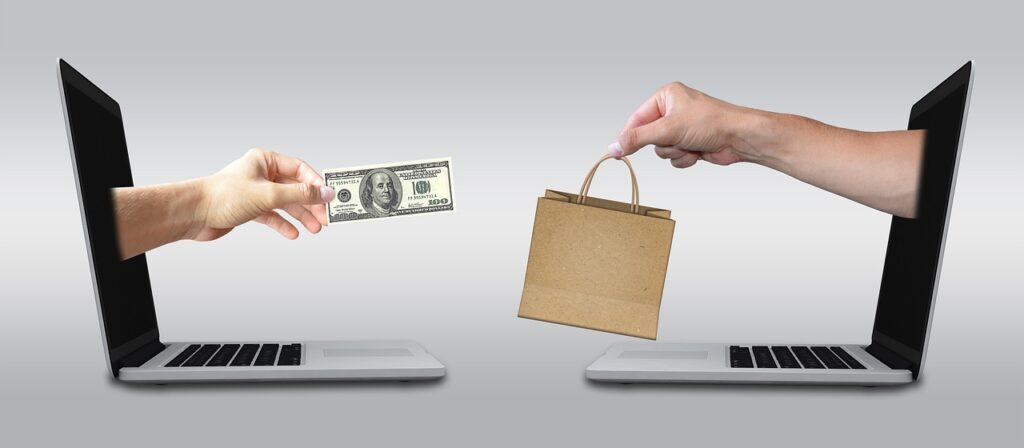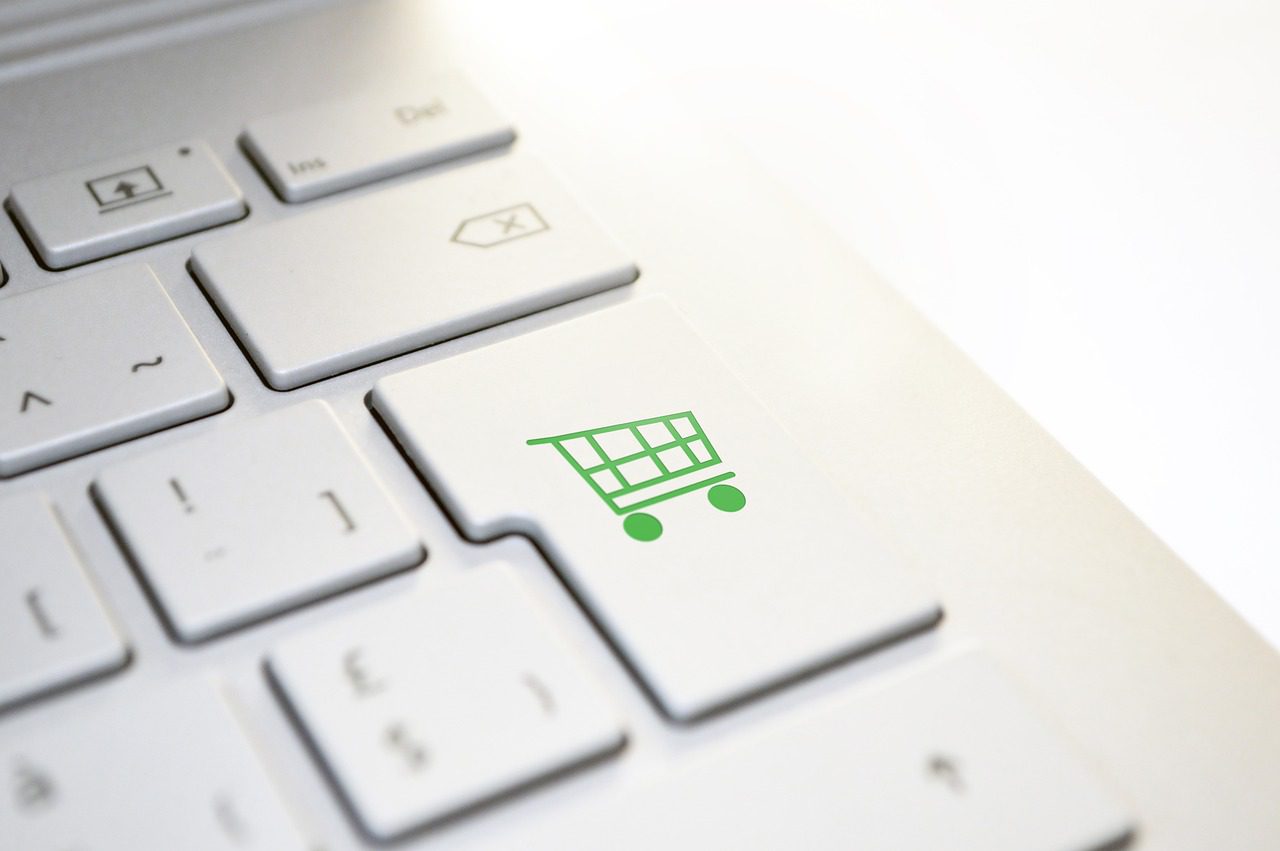Disclosure:
Some of the links on this website are affiliate links, which means that if you click on one of the links and sign up or make a purchase, we may earn a small commission at no additional cost to you. This commission helps support the maintenance and operation of this site.
We only recommend products or services that we believe will provide value to our readers. Our opinions and recommendations are based on our own research and experiences, and we strive to offer honest and unbiased content.
Please note that your support through these affiliate links is greatly appreciated, as it helps us continue to provide quality content and resources.
Thank you for your support!
A Comprehensive Guide
What is E-Commerce?
E-commerce, or electronic commerce, refers to the buying and selling of goods or services over the internet. It enables businesses to reach a global audience, offering a convenient, efficient, and scalable way to run a business. E-commerce can range from physical products, digital products, and services to subscription-based offerings.

Where to Start: Building the Foundation
Pick a Niche
Choosing a niche is one of the most important steps when starting an e-commerce business. A niche helps you focus your efforts on a specific segment of the market, making it easier to build a loyal customer base. Consider the following tips:
- Interest and Passion: Choose a niche that you’re passionate about or have experience in.
- Market Demand: Research if there is sufficient demand for the products or services in your niche.
- Competition: Evaluate the competition to find a balance between high demand and lower competition.
Popular and High-Value Niches:
- Health & Wellness: Products like supplements, fitness gear, and organic foods are in high demand.
- Sustainable and Eco-Friendly Products: Environmentally conscious consumers are seeking reusable, recyclable, and eco-friendly products.
- Tech Gadgets & Accessories: People are constantly upgrading tech, and there’s high demand for related accessories like chargers, cases, and wearable tech.
- Pet Products: Pet owners spend significant money on pet care, grooming products, and food.
- Online Education: Selling courses or e-learning materials has become a booming market.
E-Commerce Services You Could Start:
- Subscription Box Services: Monthly subscription boxes curated for a specific niche (beauty, health, snacks, etc.).
- Print on Demand: Custom-designed products like t-shirts, mugs, and posters.
- Digital Products: E-books, templates, online courses, and other downloadable content.
- Dropshipping: Selling products without holding inventory by partnering with suppliers who ship directly to the customer.

Building Your E-Commerce Website
Once you’ve picked a niche, the next step is to create your online store. Here are a few platforms and tools to help you get started:
WordPress + WooCommerce
- WordPress: One of the most popular website builders, highly customizable, and ideal for those who prefer control over every aspect of their store.
- WooCommerce: A plugin for WordPress that adds full e-commerce functionality, allowing you to manage products, orders, and payments.
Shopify
- Shopify: A user-friendly platform designed specifically for e-commerce, Shopify allows you to build a store quickly without the need for technical expertise. It has various plans and built-in tools for payment, shipping, and product management.
BigCommerce
- BigCommerce: Another popular platform that supports scalability and integrations with major marketplaces like Amazon and eBay.
Essential Plugins and Integrations
- SEO Plugins (e.g., Yoast SEO): Helps improve search engine ranking by optimizing on-page SEO elements.
- Payment Gateways (e.g., Stripe, PayPal): Seamless payment processing is crucial to a smooth customer experience.
- Email Marketing Plugins (e.g., Mailchimp, Klaviyo): Automate email campaigns, cart recovery emails, and promotions.
- Inventory Management (e.g., TradeGecko, Zoho Inventory): Helps manage stock, especially for larger inventories or when working with multiple suppliers.
- Live Chat Plugins (e.g., Tawk.to, LiveChat): Offering real-time customer support can enhance the user experience and increase conversions.
- Social Media Integration: Adding social media buttons and feeds directly to your website allows for better engagement.

Promoting Your E-Commerce Store
Now that your store is set up, you’ll need to attract customers through various marketing channels.
Social Media Marketing
- Free Methods: Regular posting on platforms like Instagram, Facebook, TikTok, and Pinterest can help organically grow your audience. Optimize your profiles with clear CTAs (Calls to Action) and engage with potential customers.
- Paid Advertising: Platforms like Facebook and Instagram Ads offer targeted campaigns based on demographics, interests, and behaviors, allowing you to reach a specific audience.
Google Ads
- Create highly targeted ads that appear when people search for relevant keywords. You can also use Google Shopping Ads to showcase your products directly on the search engine.
Content Marketing
- Writing blogs, creating videos, and sharing valuable information about your products can improve SEO, attract organic traffic, and establish authority in your niche.
Influencer Marketing
- Collaborate with influencers within your niche to promote your products. They can help build credibility and introduce your brand to their audience.
Affiliate Marketing
- Set up an affiliate program to have others promote your products in exchange for a commission. This is an effective way to expand your reach without upfront costs.

Creating a Sales Funnel
A sales funnel is a strategic approach that guides visitors from awareness to purchase. Here’s how to set up a funnel for your e-commerce store:
- Attract: Use content marketing, social media, and paid ads to draw visitors to your website.
- Engage: Capture email addresses by offering discounts or free content, such as guides or eBooks. Engage users through automated email campaigns.
- Convert: Ensure the checkout process is smooth and friction-free. Use tactics like cart recovery emails, limited-time offers, and product recommendations to increase conversions.
- Retain: Encourage repeat purchases by sending post-purchase emails, offering loyalty programs, and providing exceptional customer service.
Basics of a Sales Funnel for E-Commerce
A sales funnel is a step-by-step process that guides potential customers from the moment they land on your website to the point of making a purchase. By structuring your e-commerce sales funnel strategically, you can increase conversions and create a seamless customer journey.
Here are the fundamental components of a sales funnel:
1. Landing Page
The landing page is often the first step in the sales funnel, and its purpose is to grab attention and compel visitors to take a specific action.
Key Elements:
- Compelling Headline: A clear and concise headline that immediately communicates your offer’s value.
- Offer Description: Explain what you’re offering in a way that resonates with your target audience. This could be a free trial, discount, product preview, or exclusive content.
- Call to Action (CTA): The CTA should stand out visually (e.g., a button) and encourage visitors to take action—like signing up for an email list, downloading a freebie, or viewing a product. Examples include “Shop Now,” “Get 20% Off,” or “Start Free Trial.”
- Visuals: Use high-quality images or videos to showcase the product, convey the benefits, and build trust.
- Lead Capture Form: If your goal is to collect emails for future marketing, include a simple form asking for basic information like name and email.
2. Product Page
Once users engage with your CTA, they are typically directed to a product page where they can learn more about the product or service in detail. The product page plays a key role in convincing visitors to add items to their cart.
Key Elements:
- Product Description: A detailed and engaging description that highlights features, benefits, and unique selling points of the product.
- High-Quality Images: Multiple images from different angles (or even 360° views) help users visualize the product better. Videos or GIFs showing the product in use can also boost conversion rates.
- Price and Discounts: Clearly display the price, including any discounts or special offers. If applicable, show the original price next to the sale price to emphasize the deal.
- Customer Reviews and Testimonials: Including social proof, such as customer reviews or star ratings, builds trust and helps convince users that your product is worth purchasing.
- Shipping and Return Information: Be transparent about shipping costs and policies. Highlight any free shipping offers or easy return policies, as these can help reduce friction in the purchase decision.
- Add to Cart Button: Ensure the “Add to Cart” button is prominently displayed and easy to click, encouraging visitors to move to the next step in the funnel.
3. Checkout Page
The checkout page is where visitors finalize their purchase. The goal here is to make the process as smooth and simple as possible to avoid cart abandonment.
Key Elements:
- Cart Summary: Display the items the customer is purchasing, along with quantities, prices, and any applicable discounts or coupons.
- Easy Payment Options: Offer multiple payment gateways like credit cards, PayPal, Apple Pay, or Google Pay to accommodate different preferences.
- Shipping Details: Provide shipping options (standard, expedited, etc.) with clear costs and delivery timelines. Offering free shipping thresholds can incentivize larger purchases.
- Simple Form Design: Keep form fields minimal and easy to fill out. Pre-fill information for returning customers if possible.
- Security Indicators: Highlight security features such as SSL certificates, trust badges, or secure payment logos to reassure customers about the safety of their transaction.
- CTA to Complete Purchase: The button to complete the purchase should be large, clear, and direct—something like “Complete Purchase” or “Buy Now.”
4. Post-Purchase Page (Thank You Page)
While not part of the core purchase process, the post-purchase or “Thank You” page is important for building a relationship with the customer and encouraging further action.
Key Elements:
- Order Confirmation: A clear confirmation message with the order details.
- Next Steps: Inform the customer of what to expect next (e.g., shipping timelines, tracking information).
- Cross-Sell or Upsell: Suggest related products or special offers for future purchases.
- Social Sharing: Encourage customers to share their purchase on social media for more visibility.
- Referral Program: Offer discounts or rewards for referring friends to your store.
Putting It All Together
A well-structured sales funnel involves leading potential customers through a series of well-designed steps that guide them toward making a purchase:
- Landing Page: Captures interest with a clear value proposition and CTA.
- Product Page: Provides detailed information to help visitors make informed decisions.
- Checkout Page: Simplifies the purchase process with a streamlined checkout experience.
- Thank You Page: Reinforces the customer relationship and offers opportunities for future engagement.
By optimizing each stage, you can increase conversions, boost customer satisfaction, and maximize the effectiveness of your e-commerce funnel.
Other Advertising Methods
- Retargeting Ads: These ads target visitors who have previously visited your site but didn’t make a purchase. Retargeting can be done through Facebook, Instagram, and Google Ads.
- Email Campaigns: Building an email list is crucial. Send targeted campaigns, seasonal promotions, and product updates to engage your audience.
- Collaborations and Cross-Promotions: Partnering with other businesses to cross-promote each other’s products can increase exposure for both parties.
Creating an e-commerce business is an exciting venture that requires careful planning and execution. By picking the right niche, using effective platforms and plugins, and leveraging multiple marketing channels, you can build a thriving online store. Implement a solid sales funnel and continually optimize your strategies to drive growth and revenue.
FAQ: How to Start an E-commerce Business
1. What is the first step in starting an e-commerce business?
The first step is choosing a niche and identifying the products you want to sell. Selecting a niche allows you to target a specific audience, making it easier to market your products. Conduct market research to understand customer demand, competition, and profitability before deciding.
2. Do I need technical skills to start an e-commerce business?
You don’t need advanced technical skills to start an e-commerce business. Platforms like Shopify, WooCommerce, and BigCommerce offer user-friendly templates and tools that allow you to set up your store without coding knowledge. However, having basic skills in website management, SEO, and digital marketing can be helpful as you scale.
3. Which platform should I use to build my e-commerce store?
Some popular e-commerce platforms include:
- Shopify: Great for beginners and experienced sellers, offering easy setup, hosting, and integrated tools for payment and shipping.
- WooCommerce: A WordPress plugin offering flexibility and customization for users who want control over their store.
- BigCommerce: A robust platform with built-in marketing tools and scalability for growing businesses.
- Squarespace: Known for its sleek design templates, ideal for smaller stores. The platform you choose depends on your budget, technical knowledge, and scalability needs.
4. What types of products can I sell in an e-commerce store?
You can sell physical products (like clothing, electronics, or handmade goods), digital products (such as e-books, online courses, or digital art), or services (like consulting or coaching). Many e-commerce stores combine different types of products based on their target audience’s needs.
5. How do I source products for my e-commerce business?
Here are some common ways to source products:
- Manufacture your own: Create and sell custom or handmade products.
- Wholesale: Purchase products in bulk from suppliers and resell them at a higher price.
- Dropshipping: Partner with suppliers who handle the inventory and shipping on your behalf.
- Print on Demand: Sell custom-designed items like apparel, which are printed and shipped by a third party as orders are placed. Consider factors like shipping costs, product quality, and supplier reliability when sourcing products.
6. What are the essential features of an e-commerce website?
Key features include:
- Product Pages: Clear, detailed product descriptions with high-quality images and pricing.
- Shopping Cart and Checkout: A simple, secure checkout process with multiple payment options (credit cards, PayPal, etc.).
- Mobile-Friendly Design: Many customers shop on mobile devices, so your site must be optimized for mobile.
- Security Features: SSL certificates and encryption to protect customer data and ensure secure transactions.
- Customer Support: Options like live chat, email support, or FAQs for customer queries.
- Shipping and Returns: Clear information on shipping costs, delivery times, and return policies.
7. How do I drive traffic to my e-commerce store?
You can drive traffic through a variety of marketing strategies:
- Search Engine Optimization (SEO): Optimize your website for search engines by using keywords in product descriptions, meta tags, and URLs.
- Social Media Marketing: Use platforms like Instagram, Facebook, and Pinterest to promote products and engage with your audience.
- Email Marketing: Build an email list and send newsletters to announce promotions, new products, and updates.
- Paid Ads: Use Google Ads, Facebook Ads, or Instagram Ads to target specific audiences and increase visibility.
- Influencer Marketing: Collaborate with influencers in your niche to promote your products to their followers.
8. What is the cost of starting an e-commerce business?
The cost of starting an e-commerce business can vary widely, but here are the key expenses to consider:
- Domain Name: $10 to $15 per year.
- Hosting (for platforms like WooCommerce): $5 to $15 per month.
- E-commerce Platform: $29 to $79 per month for Shopify or BigCommerce, with options for higher plans as you scale.
- Website Design and Themes: Free or premium themes ranging from $20 to $100.
- Payment Gateway Fees: Transaction fees vary depending on your payment gateway (e.g., PayPal, Stripe).
- Marketing Costs: Paid advertising, influencer marketing, and social media campaigns.
9. How can I accept payments on my e-commerce store?
Most e-commerce platforms integrate with popular payment gateways, allowing you to accept multiple payment methods, including:
- Credit and Debit Cards: Processed through payment gateways like Stripe or Square.
- PayPal: A widely used online payment system.
- Apple Pay and Google Pay: Mobile payment options for customers.
- Afterpay/Klarna: Buy-now-pay-later options, popular for higher-priced products. Choose a payment gateway that fits your target audience’s preferences and ensure your platform supports it.
10. How do I handle shipping for my e-commerce store?
You can handle shipping in several ways:
- In-house shipping: Manage inventory and ship orders directly.
- Fulfillment services: Use services like Fulfillment by Amazon (FBA) or ShipBob, which store, pack, and ship your products for you.
- Dropshipping: Your supplier ships the product directly to the customer. When setting shipping rates, consider factors like product size and weight, shipping destination, and delivery time. Offering free or flat-rate shipping can help reduce cart abandonment.
11. Do I need a business license to run an e-commerce store?
In most cases, yes, especially if you are running your e-commerce business as a sole proprietor, LLC, or corporation. The requirements vary by country and state, but generally, you’ll need a:
- Business license: To operate legally within your jurisdiction.
- Sales tax permit: If you are selling taxable products or services. Check your local government’s website for specific licensing requirements for your area.
12. What is the difference between dropshipping and traditional e-commerce?
Traditional e-commerce involves purchasing and holding inventory, then shipping products to customers when they buy. In contrast, dropshipping allows you to sell products without holding any inventory. When a customer places an order, the product is sent directly from the supplier to the customer. Dropshipping reduces upfront costs but often results in lower profit margins and less control over shipping and product quality.
13. How can I scale my e-commerce business?
To scale your e-commerce business:
- Automate Processes: Use software to automate tasks like inventory management, order fulfillment, and customer service.
- Expand Your Product Line: Introduce new products that complement your existing offerings.
- Increase Marketing Efforts: Invest in paid advertising, influencer partnerships, and content marketing to grow your customer base.
- Enter New Markets: Sell internationally or expand to new online marketplaces like Amazon, eBay, or Walmart.
- Focus on Customer Retention: Build loyalty with existing customers through personalized offers, discounts, and excellent customer service.
14. How long does it take to start making money from an e-commerce business?
It can take a few months to a year to start generating consistent income, depending on your product, marketing efforts, and how effectively you reach your target audience. If you have a solid marketing plan and niche, you could start making sales within the first few months.
15. What are the benefits of selling on online marketplaces like Amazon, eBay, and Walmart?
Selling on marketplaces like Amazon, eBay, and Walmart provides:
- Immediate access to a large audience: These platforms have millions of active buyers.
- Built-in trust: Many customers prefer shopping on established platforms due to trust factors like customer reviews and buyer protections.
- Less upfront marketing: Unlike building your own store, marketplaces handle much of the SEO and advertising to bring customers to their platform. However, the downside includes marketplace fees and less control over branding compared to your own website.
16. How do I provide customer support for my e-commerce business?
Good customer service is key to building trust and loyalty. Here’s how to manage customer support:
- Email or Live Chat: Use tools like Zendesk or LiveChat to communicate with customers.
- Social Media: Many customers reach out on social platforms, so respond quickly to inquiries and issues.
- FAQ Pages: Provide answers to common questions about shipping, returns, and products.
- Returns Policy: Clearly outline your return and exchange policy to manage customer expectations.
By focusing on key areas like product sourcing, platform selection, and marketing, you can build a successful e-commerce business and scale it over time.
Find more from the blog on e-commerce here.





Leave a Reply